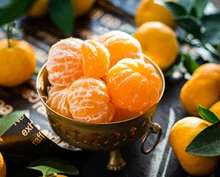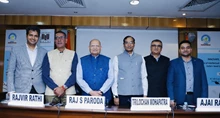
The African Asian Rural Development Organization's (AARDO) four-day international online training programme "Millets for Global Food Security" successfully concluded its second day. The training session was organized keeping in mind the International Year of Millets 2023.
The session was started and moderated by Prof. M Moni, Ex-DG of the National Informatics Centre (NIC) and Professor Emeritus at Shobhit Institute of Engineering and Technology addressing the participants from across African and Asian countries. He gave a detailed briefing of the program.
The first speaker, B. Dayakar Rao, Principal Scientist of the ICAR-Indian Institute of Millets Research, expressed gratitude for being a part of this training session. According to him, the advancement of millet science led to the development of technology. Rao said that he was pleased to share their study with people and raise consciousness in the community. He said that IIMR is making a significant contribution to raising awareness and helping us rediscover the lost golden grain.
Rao highlighted the benefits of millet in terms of nutrition and how it helps farmers become self-sufficient so they may cultivate it not only for their use but also for urban society. He talked about how novel technologies are being used to alter people's eating patterns, while working nonstop.
A brief video on NutriHub, which is India's first millet hub and is developing more than 100+ firms and young entrepreneurs to encourage millet growth globally, was shown after this.
Ravi Kumar, technical officer, IIMR taking forward the discussion underlined the need to make millets appealing to all age groups. He continued by discussing "GAPs in Processing Millet." He talked about the primary and secondary processing methods to pursue the value addition of millets. The adoption of contemporary food processing techniques such as extrusion cooking, cold extrusion (vermicelli/pasta/noodles), baking, flaking, and puffing has helped millets become more popular and useful in recent years. He went on to discuss how these technologies can be used to produce a variety of millet goods.
Dr. Sanjeeb K Behera, Head IEC, AARDO announced that seeing the excitement of participants, AARDO, will try to collaborate with IIMR and ICRISAT, to provide physical training programmes for member countries.
Sathyanarayanan Raman, COO of Millet Mart Ventures Private Limited, International Marketing and Consulting Office, India emphasized the retrospection of millet, strengthening the millet market in Asia and Africa.
Raman specified the worldwide production of millet and as per the FAO, the output of millet on a global scale was predicted to reach 28.2 million metric tonnes in 2019 and 30.5 million metric tonnes in 2020. With a market share of 33.3% in 2020, India became the largest producer on the planet.
He further added that the market was estimated to be worth 9.95 billion USD in 2020, and it is anticipated to increase to 14.14 billion USD in 2028, with a CAGR of 4.49% between 2021 and 2028. Trade groups, supermarkets, grocery shops, and internet platforms—among others—all play a significant role in the distribution of millet goods to their final consumers.
He said millets can be transformed into edible grain by processing, which raises the grain's quality. Millets must be processed to be used as food since this improves the dish's appearance, flavour and simplicity of preparation. However, certain millets need further processing to maximize grain recovery and polishing to preserve their nutritional content. Raman also mentioned the difficulty in finding ways to increase millet processing technology (dehulling, separation, polishing, etc.) while preserving nutritious content.
The day was concluded with a brief about tomorrow's session. For day 3, Dr. Debabandya Mohapatra (Senior Scientist, Central Institute of Agricultural Engineering Bhopal, India) and Mr. James Rema Masisa (Director of Food and Crops Monitoring, Ministry of Agriculture, Migori, Kenya) will enlighten more about technologies in millet value change and challenges faced by farmers in African condition, respectively.











